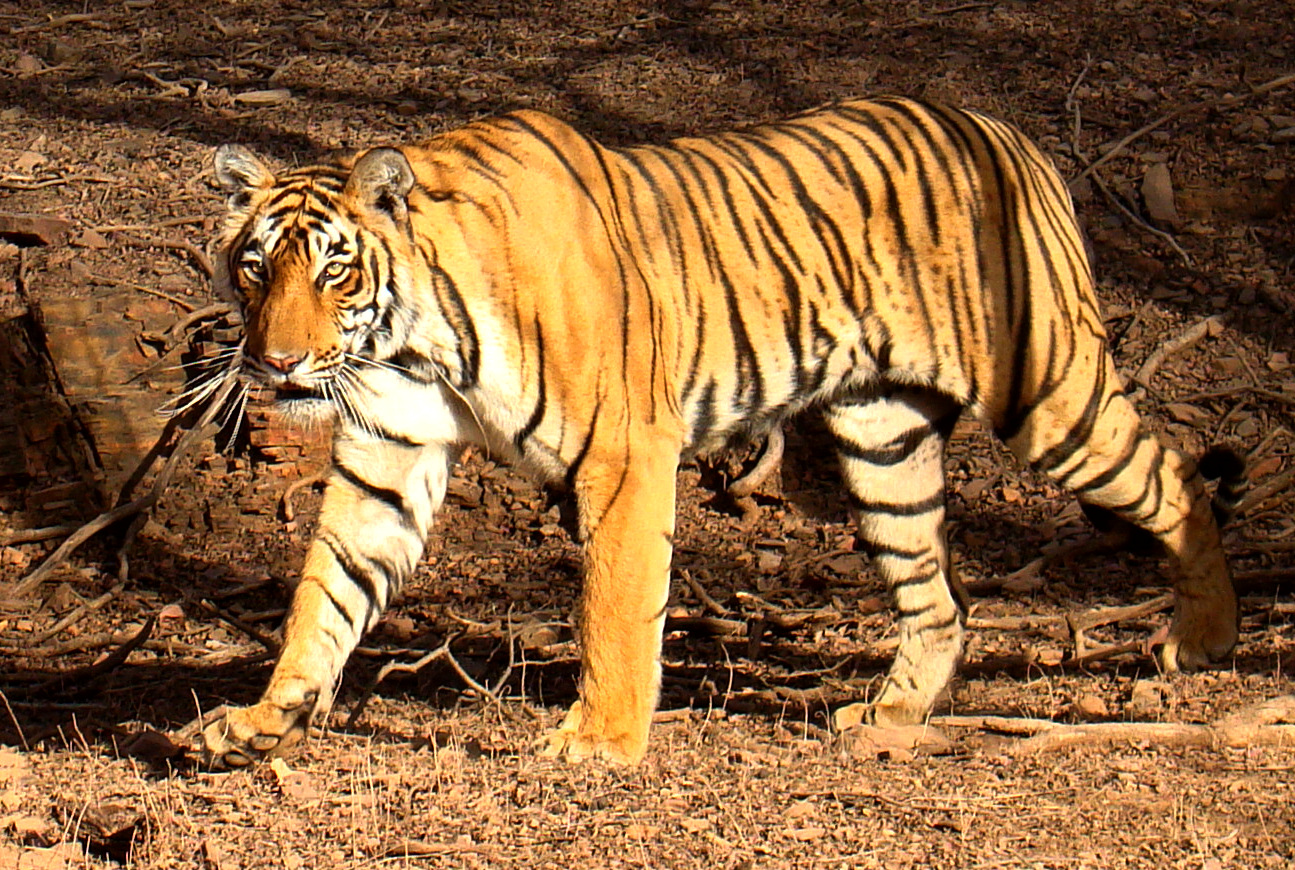 |
| Forest officials inspecting a cage trap intended to catch a leopard that recently killed a one-and-half-year old child. |
In
India, the
leopard is the most widespread of the big cats. Its range has been known to extend close to human habitations due to people pushing into the big cat's habitat. This results in incidences of
human-leopard conflicts with people either getting seriously injured or even killed. The response for such incidences by villagers is call for retaliation against the leopard and kill it in cold blood. This was the recent case in Udal village in the town of
Almora,
Uttarakhand where a leopard killed a one-and-half-year old child in front of its mother while playing in the courtyard of her house. The incident sparked a furious outcry among the villagers, who protested with the child's body and called for the leopard to be killed.
Divisional Forest Officer (DFO) Mahatim Singh Yadav stated that a permission has been given through an order declared by the chief wildlife warden to trap or
tranquilize the leopard. He further added that forest officials have also been given permission to kill the animal if they fail to catch it. The deceased's family has been given a compensation of
Rs. 90,000 and the remaining amount - Rs. 2.10
lakh - would be later provided. A cage has been set up in the area where the child's body was found, along with
camera traps. Another cage has been installed in the village on Wednesday. In addition to forest officials, a hunter from
Uttar Pradesh's Bijnor area has been called to kill the leopard. Wildlife experts, however, found the move questionable. A wildlife expert based in
Ramnagar, A.G Ansari, stated that it is only relevant to kill a leopard if it has killed five people and poses a threat. Otherwise, it would be illegal. He further pointed out that how can forest officials say if the leopard they either capture or kill is the same one that killed this child. He suggested that forest officials should focus on capturing and tranquilizing the leopard, rather than kill it.
 |
| An Indian leopard in its natural habitat |
I strongly agree with Mr. Ansari's words of advice when it comes to dealing with India's growing human-leopard conflict. I firmly believe that forest officials should adhere to his advice in dealing with this recent incident in which a child lost its life to a leopard. I very much understand the pain it has inflicted upon the child's family and the entire village, but resorting to mob justice is not the way to solve the problem. All across India, whenever a person, especially a child, is killed in a leopard attack, the entire village would go on a witch hunt, find a leopard (any leopard) and ruthlessly kill it. In June 2018, villagers set a forest on fire in Uttarakhand's Harinagari area in
Bageshwar district after a leopard killed a seven-year-old boy. These indiscriminate killings are intolerable! Combating human-leopard conflict in India should be done in a concerted and collected way that neither people nor leopards are harmed. This includes collaborating with wildlife experts and considering their professional advice and acting upon it. I also recommend that substantial barricades should be implemented around the peripheries of villages frequented by leopards and that villagers should be educated on why leopards resort to attacking people and what measurements should be taken to tackle any conflict issues. When a leopard attacks and injures or kills a human being, it is because human beings moved into its habitat and converted it into their community by clearing vegetation to build their houses and farmland and killing off the big cat's natural prey. This, in turn, changes the leopard's behavior and it will venture into villages to search for food. As a result, people get caught in the crossfire and therefore the big cat gets blamed for causing nuisance. It just goes to show that
man-eaters are man-made.
View article here



_in_base_of_Luna_Cirque_North_Cascades_Nat._Park_Picket_Range_North_Cascades%2C_WA.jpg/1920px-Lousy_Lake_(Tarn)_in_base_of_Luna_Cirque_North_Cascades_Nat._Park_Picket_Range_North_Cascades%2C_WA.jpg)


_2015-06-05.jpg/1920px-Face_still_of_male_lion_(Panthera_leo)_2015-06-05.jpg)
.jpg/1920px-Canine_Distemper_Virus_Cytoplasmic_Inclusion_Body_(Blood_smear%2C_Wright's_stain).jpg)















